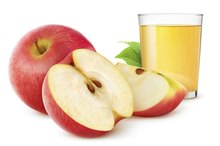What does fact checked mean?
At Healthfully, we strive to deliver objective content that is accurate and up-to-date. Our team periodically reviews articles in order to ensure content quality. The sources cited below consist of evidence from peer-reviewed journals, prominent medical organizations, academic associations, and government data.
- Journal of International Medical Research: The Effect Of Chlorogenic Acid Enriched Coffee On Glucose Absorption..
- Journal of International Medical Research: The Effect Of Chlorogenic Acid Enriched Coffee On Glucose Absorption..
- Carcinogenesis: Caffeic Acid, A Phenolic Phytochemical In Coffee, Directly Inhibits Fyn Kinase Activity...
- Carcinogenesis: Caffeic Acid, A Phenolic Phytochemical In Coffee, Directly Inhibits Fyn Kinase Activity...
- Talanta: Fatty Acid Profiles As Discriminant Parameters For Coffee Varieties Differentiation
The information contained on this site is for informational purposes only, and should not be used as a substitute for the advice of a professional health care provider. Please check with the appropriate physician regarding health questions and concerns. Although we strive to deliver accurate and up-to-date information, no guarantee to that effect is made.
Tannins and Acids in Coffee
Roasted coffee contains three essential groups of acids: aliphatic acid, chlorogenic acid and phenolic and alicyclic acids. Coffee also contains the inorganic acid, phosphoric acid. The specific types and concentrations of these various acids vary in coffee depending on the type of bean and factors of brewing.
Tannic Acid
Tannic acid, also known as gallotannic acid, is an astringent plant product present in coffee. Its biological purpose is still unknown, according to "A Dictionary of Biology", though biologists and ecologists theorize it may impart an unpalatable taste to discourage animals from grazing on the plants containing it, and it may shield the plants from attack by pathogens. The generic term "tannins" is used to describe any number of compounds containing hydroxy acids, phenolic acids and glucosides.
Chlorogenic Acids
Acids Found in Coffee
Learn More
Approximately 7 percent of coffee's dry weight can be attributed to chlorogenic acids, as can much of some coffee's acidic taste, or perceived acidity. Chlorogenic acids have an astringent taste and may contribute to a heightened "body" in the coffee. Over 17 different chlorogenic acids have been isolated in coffee beans, most of which degrade during the roasting process. A 2007 study in the "Journal of International Medical Research" suggests that the chlorogenic acids in coffee may help the body absorb and utilize dietary glucose, thereby encouraging weight loss 1.
- Approximately 7 percent of coffee's dry weight can be attributed to chlorogenic acids, as can much of some coffee's acidic taste, or perceived acidity.
- A 2007 study in the "Journal of International Medical Research" suggests that the chlorogenic acids in coffee may help the body absorb and utilize dietary glucose, thereby encouraging weight loss 1.
Aliphatic Acids
Aliphatic acids exist in coffee mostly in the form of proteins, as amino acids. Coffee contains at least two dozen aliphatic acids including acetic, citric, lactic, malic and pyruvic acid. In its green form, coffee beans contain only a negligible amount of these acids. But when roasted, the concentration of these acids increases exponentially. Next to the chlorogenic acids, aliphatic exist in the highest proportions in roasted coffee.
- Aliphatic acids exist in coffee mostly in the form of proteins, as amino acids.
Phenolic & Alicyclic Acids
Chlorogenic Acids in Coffee
Learn More
Coffee is rich in phenolic acids, such as caffeic, ferulic and quinic acids. Phenolic acids are types of polyphenols, which possess antioxidant properties. A 2009 study in "Carcinogenesis" suggested that the caffeic acid in coffee may possess anti-carcinogenic properties as well.
Fatty Acids
Among the lipids in coffee oil are fatty acids in similar concentration as is found in edible vegetable oil. A 2000 study in "Talanta" found at least 10 fatty acids in coffee oil extracts, including palmitic, stearic, oleic, linoleic and linolenic acids. A 2006 study in the "Journal of the Science of Food and Agriculture" determined that the oil in coffee could be used as a valid source for essential fatty acids.
- Among the lipids in coffee oil are fatty acids in similar concentration as is found in edible vegetable oil.
- A 2006 study in the "Journal of the Science of Food and Agriculture" determined that the oil in coffee could be used as a valid source for essential fatty acids.
Factors Influencing Acidity
Several factors seem to influence the acidity in a cup of coffee, including how long and at what temperatures the beans have been roasted, what kind of roaster was used and the method of brewing. The lighter the roast, the higher the concentration of acids tends to be; the darker the roast, the lower the acid concentration. Coffee grown at higher altitudes and in volcanic, mineral-rich soil typically has a higher acid content. Washed coffee has a higher perceived acidity than dry roasted coffee.
- Several factors seem to influence the acidity in a cup of coffee, including how long and at what temperatures the beans have been roasted, what kind of roaster was used and the method of brewing.
Related Articles
References
- Journal of International Medical Research: The Effect Of Chlorogenic Acid Enriched Coffee On Glucose Absorption..
- Carcinogenesis: Caffeic Acid, A Phenolic Phytochemical In Coffee, Directly Inhibits Fyn Kinase Activity...
- Talanta: Fatty Acid Profiles As Discriminant Parameters For Coffee Varieties Differentiation
- Coffee Research Institute: Coffee Chemistry - Coffee Acidity
- Poole R, Kennedy OJ, Roderick P, Fallowfield JA, Hayes PC, Parkes J. Coffee consumption and health: umbrella review of meta-analyses of multiple health outcomes. BMJ. 2017;359:j5024. doi:10.1136/bmj.j5024
- Choe JW, Joo MK, Kim HJ, et al. Foods inducing typical gastroesophageal reflux disease symptoms in Korea. J Neurogastroenterol Motil. 2017;23(3):363‐369. doi:10.5056/jnm16122
- Rubach M, Lang R, Bytof G, et al. A dark brown roast coffee blend is less effective at stimulating gastric acid secretion in healthy volunteers compared to a medium roast market blend. Mol Nutr Food Res. 2014;58(6):1370-3. doi:10.1002/mnfr.201300890
- Liu J, Wang Q, Zhang H, Yu D, Jin S, Ren F. Interaction of chlorogenic acid with milk proteins analyzed by spectroscopic and modeling methods. Spectroscopy Letters. 2015;49(1):44-50. doi:10.1080/00387010.2015.1066826.
- Liszt KI, Ley JP, Lieder B, et al. Caffeine induces gastric acid secretion via bitter taste signaling in gastric parietal cells. Proc Natl Acad Sci U S A. 2017;114(30):E6260–E6269. doi:10.1073/pnas.1703728114
Resources
Writer Bio
Based in Maine, Sage Kalmus has written extensively on fitness, nutrition, alternative health, self-improvement and green living for various websites. He also authored the metaphysical fiction book, "Free Will Flux." Kalmus holds a Bachelor of Science from Boston University's College of Communication and is a Certified Holistic Health Counselor with special training in Touch-For-Health Kinesiology.









